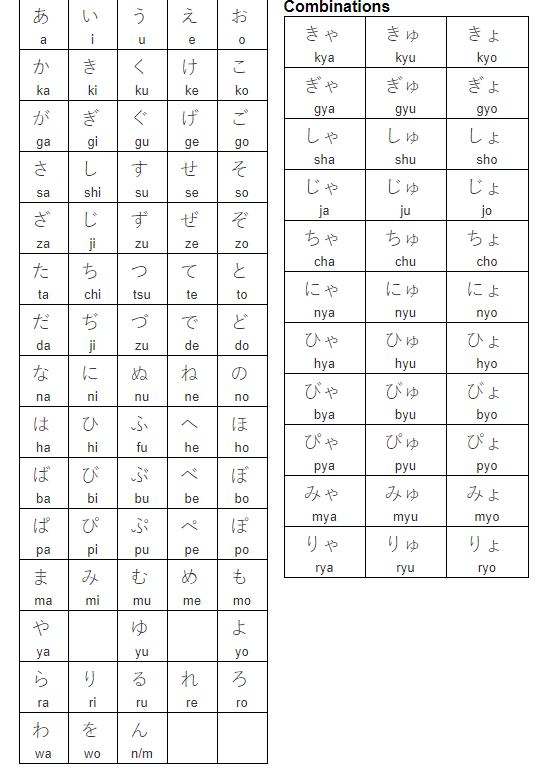Hiragana - ひらがな
Hiragana - ひらがな
The first step to learning the Japanese language is to learn the alphabet. Or, at least, to learn the sounds that exist in the language. There are absolutely no "tones" in Japanese like in many other asian languages and there are only 2 exceptions within the alphabet which will be explained later. The Japanese alphabet does not contain letters but, instead, contains characters and, technically, they are not alphabets but character sets. The characters in the chart below are called Hiragana. Hiragana is the main alphabet or character set for Japanese. Japanese also consists of two other character sets - Kanji (Chinese characters), which we will get into later, and another alphabet/character set, Katakana, which is mainly used for foreign words. Katakana will be covered in next post. Don't wait to move on until you have all Hiragana characters memorized - learn them as you continue to go through the other lessons.
There are 5 vowels in Japanese. (a), pronounced "ahh", (i), pronounced like "e" in "eat", (u), pronounced like "oo" in "soon", (e), pronounced like "e" in "elk", and (o), pronounced "oh". All Hiragana characters end with one of these vowels, with the exception of (n). The only "consonant" that does not resemble that of English is the Japanese "r". It is slightly "rolled" as if it were a combination of a "d", "r", and "l".
Example: あい – love (read as “ai”)
あう – to meet
いえ – house
おい – nephew
うえ – above
いう – to say
Each additional column represents a consonant sound with each of the five vowel sounds. For example, the “k” column has the following sounds.
か ka
き ki
く ku
け ke
こ ko
「ん」 is the only character with no vowel sound. It adds an “n” sound as shown in the examples below.
きん – gold (read as “kin”)
おんな – woman; girl (read as “on-na”)
おんがく – music (read as “on-ga-ku”)
Here are my recommendations for learning how to read, write, hear, and say the characters and sounds in Hiragana.
Reading: You’ll be getting plenty of reading practice with the material in this book.
Writing: You’ll need to develop muscle memory so use regular pen and paper. Below are handy PDFs for Hiragana writing practice.
Hiragana trace sheets
japanese-lesson.com
Hearing: You can listen to the pronunciation for each character by clicking on it in the first chart. If your browser doesn’t support audio, you can also download them at http://www.guidetojapanese.org/audio/basic_sounds.zip. There are also other free resources with audio samples.
Speaking: Practice repeating the sounds. I recommend recording yourself to get an accurate idea of what you sound like. Pay careful attention to the “r” sounds!


Comments
Post a Comment